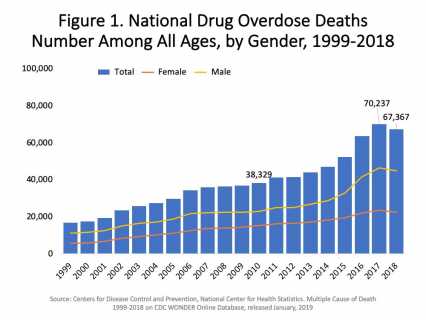
Benzo is a world-wide prescription drug, which belongs to a class of psychoactive drug (chemical drug). Also known as a minor tranquilizer.
In 1955, Benzo was accidentally synthesized by Leo Sternbach while working at Hoffmann-La Roche on the development of tranquilizer.
Back in the 1960’s it would be common for Housewives to take Benzos that the Rolling Stones even based a song about it called “Mama’s Little Helper.”
By the end of the 1970’s, Benzo were the most prescribed medications, globally.
In the 1980’s, Benzo started to be suspected to be an addictive drug.
Present-Day, Benzo Related-Overdosage Death and Prescription rose doubled as of 2015.
Commingly Used Benzos:
- alprazolam (Xanax)
- clonazepam (Klonopin)
- chlordiazepoxide (Librium)
- diazepam (Valium)
- lorazepam (Ativan)
- temazepam (Restoril)
- triazolam (Halcion)
What are Benzos used for?
Benzo Withdrawal Symptoms – Infographic
Anxiety(Commonly Prescribed)
Feeling of fear and apprehension, temporarily
Social Anxiety Disorder
Feeling judged and neglected
Nervousness
Fear, Constant Worry, over-thinking, and uncomfortable
Panic Disorders
Sudden feelings of life-threatening danger that doesn’t exist
Alcohol Withdrawal
Headaches, nausea, and possibly seizures
Muscle Spasms
Temporary painful muscle twitching and contacting
Seizures
Your nerves system misfiring and spasms throughout the body
Premenstrual Syndrome
Mood swings, food cravings, fatigue, irritability, and depression.
Insomnia(Commonly Prescribed)
Tired, hard time getting to sleep and getting rest
Social Anxiety Disorder
Feeling judged and neglected
Sedation during Surgery
Help the patient relax and block pain during surgery
Generalized Anxiety Disorder (GAD)
Feeling severe ongoing anxiety
What are the symptoms and side effects from taking Benzo?
- Confusion
- Coma
- Physical Weakness
- Suicide (Rarely Occurs)
- Headaches
- Insomnia
- Difficult Breathing
- Poor Decision Making
- Blurred Vision
- Tremors
- Memory Problems
- Poor Judgement
- Dizziness
- Black Out
- Slurred Speech
- Lack of Motor Co-ordination
- Insomnia
- Anorexia
- Seizures
- Inability to Defend Themselves
- Drowsiness
- Anxiety
- Suicide Thoughts
- Possible Death
What are the Withdrawal Symptoms and Risks
- Drug Cravings
- Short-Term Memory Loss
- (Possibly) Seizures
- Anxiety
- Insomnia
- Abdominal Pain
- (Possible) Death
- Abdominal Pain
What are the differences between Benzo Addiction V.S. Dependency V.S. Homeostasis?
Benzo Addiction Mentally, your mind and behavior changes while crave the drug and believe you will die if you don’t take the drug again |
Benzo Dependency
Physically, your body is adapted to the presence of the drug and can’t function without it
Benzo Homeostasis
Trained your body and mind adjust with ritual behaviors for the daily intake dosage of your drug
Facts and Myths about Benzo’s
Myth
Benzodiazepines are first-line treatment for anxiety
Facts
- Maybe be used for 2-4 weeks to treat severe symptoms of anxiety disorder, ideally while waiting for the full effect of other treatment options
- Diminish in effectiveness beyond 4-6 weeks
Benzodiazepines are first-line treatment for insomnia
- May provide short-term(1-2 weeks) symptomatic relief for severe insomnia while other treatment modalities are bring implemented
- May result in rebound insomnia once stopped
- Do not appear to be effective for chronic insomnia or last-night insomnia,experienced more commonly by older adults
Low-dose Benzodiazepines are not a problem
- Benzodiazepine use can result in physical dependence at any dose with prolonged use
- May be misused to prevent perceived or anticipated withdrawal rather than for their originally intended purpose
Is Benzodiazepine Dangerous?
According to the CDC states,” Drug overdose deaths involving benzodiazepines rose from 1,135 in 1999 to 11,537 in 2017.”

According from the article from NCBI states,” Between 1996 and 2013, the number of adults filling a benzodiazepine prescription increased 67%, from 8.1 million to 13.5 million.”

According to SAMHSA Drug Abuse Warning Network states, “Emergency room visits involving buprenorphine increased substantially from 3,161 in 2005 to 30,135 visits in 2010 (Figure 1).”

Benzodiazepine and narcotic pain reliever combination admissions were almost evenly divided between females and males (49.2 and 50.8 percent, respectively). The average age of benzodiazepine and narcotic pain reliever combination admissions was 31.2 years; 66.9 percent were aged 18 to 34.

Is it safe to get off Benzos safely?
Recommended from professional doctors to not quit Benzo intake cold-turkey!
Quitting Benzo Intake cold-turkey can lead to sever withdrawal symptoms such as death, seizures, and suicidal thoughts
If you or anyone needs help on quitting benzo, please look for professional and licensed help near you with S.A.M.H.S.A’S Facility Locater
Substance Abuse and Mental Health Services Administration is a branch of the U.S. Department of Health and Human Services
Different ways people get off from Benzo addiction and use
Did you know when patients asked their doctors and physicians why they weren’t feeling well, maybe to do with the drug.
They didn’t believe so their patients had to come up with their own solution. So they started to do the Ashton Method. Even so, doctors think their patients can get off from Benzos eventually in 4 weeks, which isn’t enough time depending on every individual.
Micro-Tapering
Portioning the correct amount of medication over 4 daily doses while cutting back 1/100th mg each day.
At first, it can be complicated and looks like something out of a chemistry class because this requires precision, math, chemistry, and keep a record of everything you do.
The dangers of this method is:
- No professional help nor supervision since people do this on their own and learn this from online.
- One mistake can really bring harm into the health of the patient and others
- This journey can take time depending on every individual, but the process can take 6 months to 1 year or so.
- This practice is not based on science, but experience.
The Ashton Method
The Ashton Method was developed by Dr.C. Heather Ashton to help patients achieve drug-free freedom.
The Ashton Method Benzo Withdrawal Basic Principles
Basic Principles
- Gradual Dosage Reduction
-Individual Withdrawal Rate
-Adjust Drug
2.Psychological Support
-Simple encouragement to psychological therapies
-Long-term
-Informative
-Motivation
- Keep in mind every person is different so everybody will reach differently to the method.
- The process can take to days, weeks, months, even a couple of years to successfully recover
- Different personal factors also apply such as the environment, the people they are around with, the stresses that exist where they are.
- The results are successful if the patient, not the doctor will go through this method willingly 110%.
- Doesn’t recommend rabid detox because the person will not have enough time to catch up with the process
- May require adjustments time to time depending on progress, always go forward NOT BACKWARD STEP INCREASING DISAGE AGAIN
- Withdrawal is recommended as outpatient treatment
Pros and Cons of Taking Benzos
Pros
- Temporarily eases the symptoms of insomnia, anxiety, and pain.
- Ease the pain during surgery in Hospitals
Cons
- In the long run, the symptoms were supposed to ease come back tenfold
- Your body and mind can quickly and easily become dependent on the drug
- Overdose
- Suicide
- Constant pain and uncomfortable for long periods of time.
Benzos on the Elderly
With all of this to consider, the elderly have it worse since they are the age group over 55+ to be prescribed with benzo by their own doctors and/or physicians.
Along with the data on the suicide rate, overdose, and other symptoms being on benzos.
Studies have shown that there’s an increased risk of adverse reactions when the elderly are taking benzos, including hip fractions. Any small thing can impact by a huge scale depending on any little factor of the elderly.
Benzos and Driving
There was a study done by the NCBI in 1998 Apr stating,” In two studies where subjects had blood alcohol concentrations less than the legal limit, BZDs were found in 43% and 65% of subjects.”
They concluded that BZDs approximately double the risk of motor vehicle accidents.
Patients who take Benzos are more likely to be involved in a car accident because Benzos effects their ability to drive.
Slows down their reaction and focus on the road.
Take away
Don’t do cold turkey from benzos.
Keep constant updates with your doctors and physicians
Conduct research yourself, don’t blindly agree everything the doctors says.
Doctors need to know the risks, factors into play, such as how to get their clients off from benzos safely.
Use benzos as a last resort, and when taking benzos take the minimal as possible, shortest as possible, for the least amount of time, possible.
Conclusion
As mentioned before, every individual is effected differently then one another. There are so many cons that out way the pros. The data conducted in this research doesn’t look pretty. The takeaway is to do research yourself, don’t cut off from benzos cold-turkey, and use benzos as the last resort.
This article was done by Axel Morales from Step House Recovery who is an Digital marketer who writes and conducts research on rehabilitation, health of the well-being, related fields.
Any Comments or anything to share about? Comment down below and share, please.